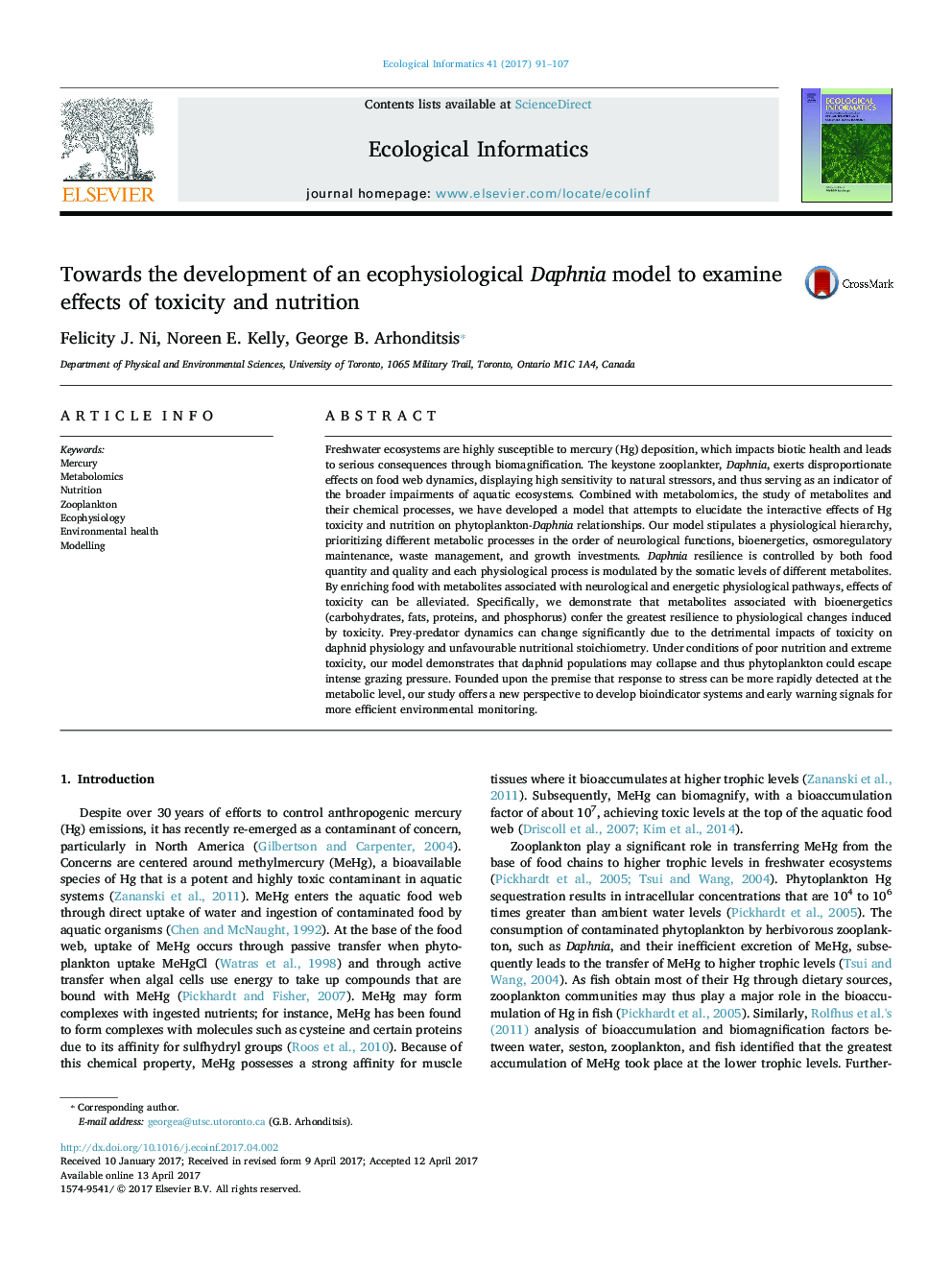| کد مقاله | کد نشریه | سال انتشار | مقاله انگلیسی | نسخه تمام متن |
|---|---|---|---|---|
| 5741915 | 1617193 | 2017 | 17 صفحه PDF | دانلود رایگان |

- We augment an ecophysiological Lotka-Volterra model with a toxicity component.
- Daphnia resilience is controlled by both food quantity and quality.
- Energetic congeners confer the greatest resistance and resilience to toxicity.
- Daphnia populations collapse with conditions of poor nutrition or extreme toxicity.
Freshwater ecosystems are highly susceptible to mercury (Hg) deposition, which impacts biotic health and leads to serious consequences through biomagnification. The keystone zooplankter, Daphnia, exerts disproportionate effects on food web dynamics, displaying high sensitivity to natural stressors, and thus serving as an indicator of the broader impairments of aquatic ecosystems. Combined with metabolomics, the study of metabolites and their chemical processes, we have developed a model that attempts to elucidate the interactive effects of Hg toxicity and nutrition on phytoplankton-Daphnia relationships. Our model stipulates a physiological hierarchy, prioritizing different metabolic processes in the order of neurological functions, bioenergetics, osmoregulatory maintenance, waste management, and growth investments. Daphnia resilience is controlled by both food quantity and quality and each physiological process is modulated by the somatic levels of different metabolites. By enriching food with metabolites associated with neurological and energetic physiological pathways, effects of toxicity can be alleviated. Specifically, we demonstrate that metabolites associated with bioenergetics (carbohydrates, fats, proteins, and phosphorus) confer the greatest resilience to physiological changes induced by toxicity. Prey-predator dynamics can change significantly due to the detrimental impacts of toxicity on daphnid physiology and unfavourable nutritional stoichiometry. Under conditions of poor nutrition and extreme toxicity, our model demonstrates that daphnid populations may collapse and thus phytoplankton could escape intense grazing pressure. Founded upon the premise that response to stress can be more rapidly detected at the metabolic level, our study offers a new perspective to develop bioindicator systems and early warning signals for more efficient environmental monitoring.
Journal: Ecological Informatics - Volume 41, September 2017, Pages 91-107